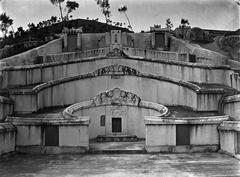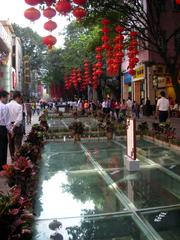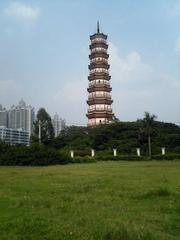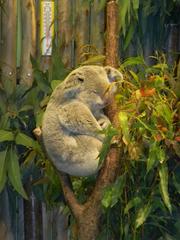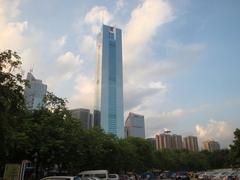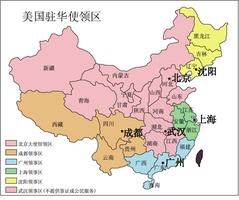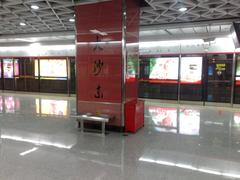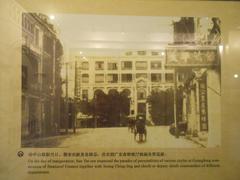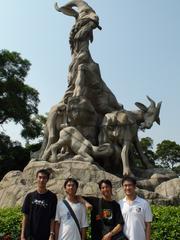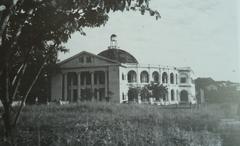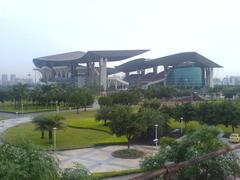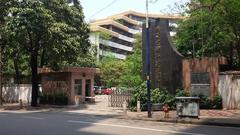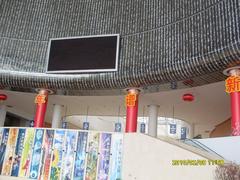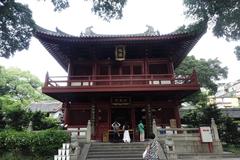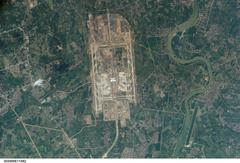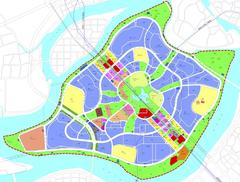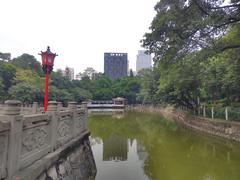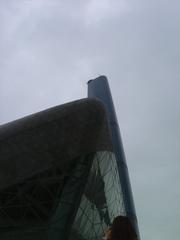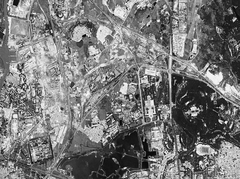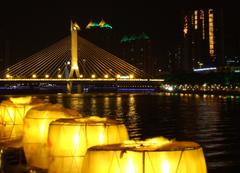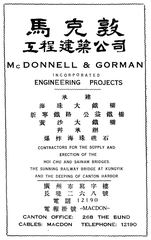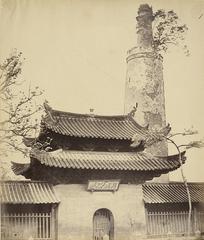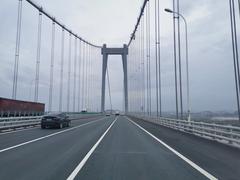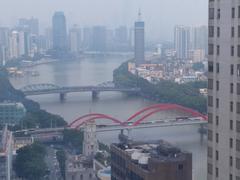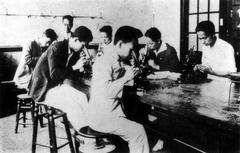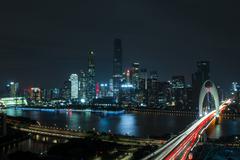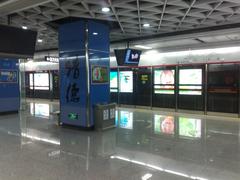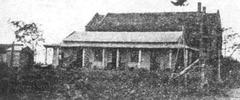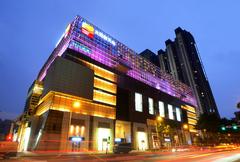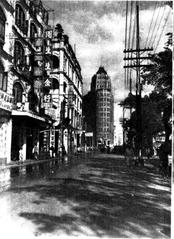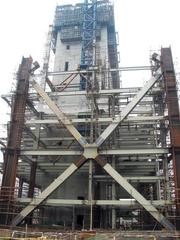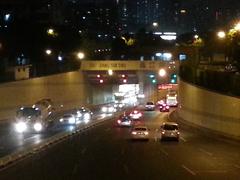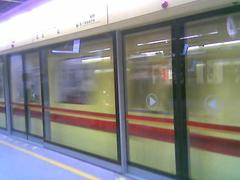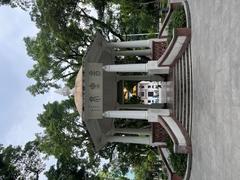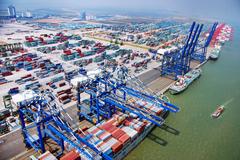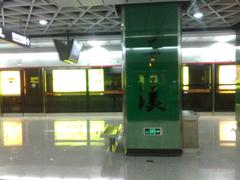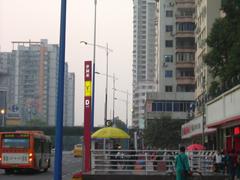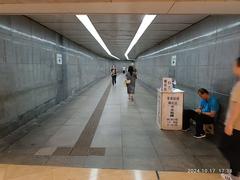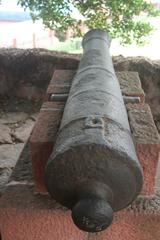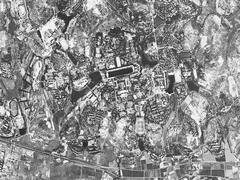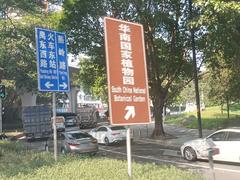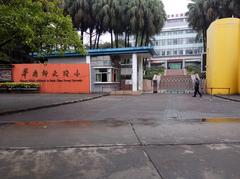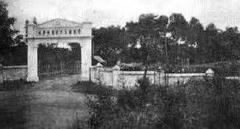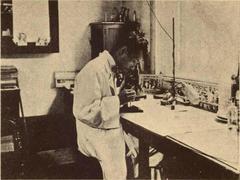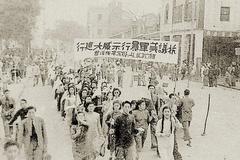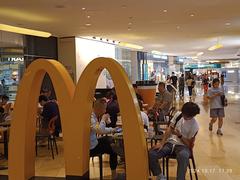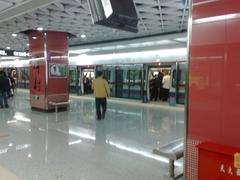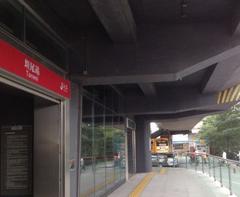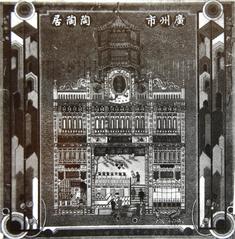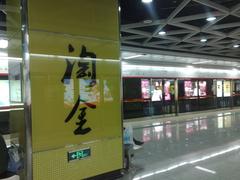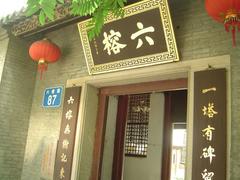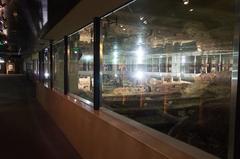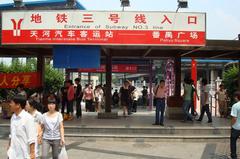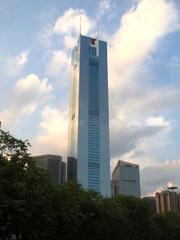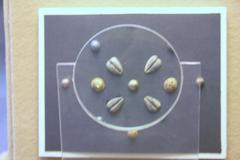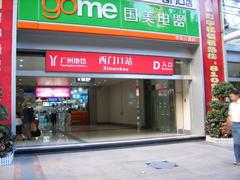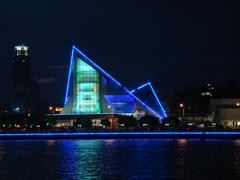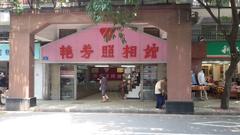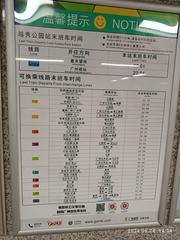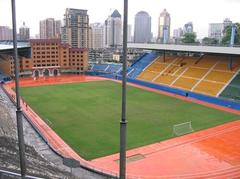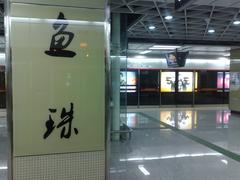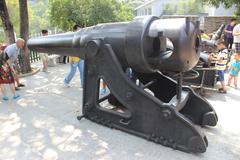
Xintangzhen Guangzhou: Visiting Hours, Tickets, and Historical Sites Guide
Date: 04/07/2025
Introduction
Situated in eastern Guangzhou’s Zengcheng District, Xintangzhen (新塘镇) is a remarkable destination that seamlessly integrates profound historical heritage with dynamic modern industry. Widely known as “China’s Denim Capital,” Xintangzhen’s roots stretch back to the Qin and Han dynasties, evolving from an ancient agricultural community along the Pearl River Delta into a leading global textile powerhouse. Visitors today encounter a vibrant tapestry of Lingnan culture, ancestral halls, temples, and traditional architecture that coexists with sprawling denim factories and energetic textile markets (chinaculturetour.com; Mapcarta).
This detailed guide delivers everything you need to know for visiting Xintangzhen: from historical context and must-see attractions, to visiting hours, ticketing details, transportation, accommodations, and practical tips. Whether you are a history enthusiast, textile industry professional, or cultural explorer, Xintangzhen offers a unique journey through centuries of tradition and innovation in southern China (chinadiscovery.com; explorecity.life).
Table of Contents
- Introduction
- Historical Evolution of Xintangzhen
- Economic and Industrial Significance
- Cultural and Social Landscape
- Key Attractions and Visitor Information
- Practical Visitor Tips
- Events and Festivals
- Environmental and Urban Development
- Notable Excursions
- Frequently Asked Questions (FAQ)
- Plan Your Visit
- References
Historical Evolution of Xintangzhen
Early Settlement and Geographic Significance
Xintangzhen’s origins date to the Qin and Han dynasties, when it belonged to the ancient Nanhai Commandery. Its position near the Dongjiang (East River) and the Pearl River established it as a strategic hub for agriculture, water transport, and trade for centuries (chinaculturetour.com). Fertile plains fostered rice cultivation and fishing, forming the foundation of the local economy.
Role in the Maritime Silk Road
Guangzhou, as a principal port during the Han dynasty, played a pivotal role in the Maritime Silk Road (attractionsofchina.com). Xintangzhen, situated along key riverine routes, supported the port city through logistics and agricultural supply, contributing to the movement of rice, silk, and ceramics.
Agricultural and Commercial Development
Through the Sui, Tang, Song, and Yuan dynasties, Xintangzhen retained a strong agricultural identity while gradually emerging as a market hub (chinaculturetour.com). Song and Yuan eras saw the growth of trading towns, with Xintangzhen becoming a center for agricultural goods, textiles, and handicrafts. Innovative irrigation systems enabled double-cropping and sericulture, tying the area to the historic silk trade.
Qing Dynasty Textile Emergence
The Qing dynasty marked Xintangzhen’s shift to textile production, responding to Guangzhou’s prominence as a foreign trade port under the Canton System (chinahora.com). Local workshops produced cotton and eventually denim, laying the groundwork for today’s vast textile industry. Prosperity led to the construction of Lingnan-style residences, ancestral halls, and temples—many of which survive with characteristic grey-brick facades and ornate carvings (gz.gov.cn).
Twentieth-Century Modernization
The early 20th century brought rapid modernization. Improved roads and railways connected Xintangzhen to Guangzhou and the Pearl River Delta, fueling expansion of the textile sector. The township also became active in revolutionary movements inspired by Sun Yat-sen (chinaculturetour.com).
Post-1949 Industrialization
Following the establishment of the People’s Republic of China, Xintangzhen underwent intense industrialization. By the late 20th century, it became “China’s Denim Capital,” home to thousands of factories producing jeans for domestic and international markets (chinahora.com). This growth brought urbanization, new housing, and commercial centers, along with environmental challenges related to textile manufacturing.
Cultural Heritage Today
Despite dramatic change, Xintangzhen preserves its Lingnan heritage. Ancestral halls, clan traditions, and festivals like the Dragon Boat Festival remain central to community life. The food scene features Cantonese classics—rice noodles, roast meats, dim sum—while local government and residents actively support the preservation of intangible cultural practices such as Cantonese opera (chinaculturetour.com).
Economic and Industrial Significance
The “Jeans Capital” of China
Xintangzhen is internationally recognized as the “Jeans Capital of China,” producing over 200 million pairs of jeans annually across more than 3,000 textile and garment enterprises. The Xintang International Jeans City complex attracts buyers and professionals from around the world, anchoring the town’s global reputation (Mapcarta).
Economic Integration with Greater Guangzhou
Strategically positioned within the Guangzhou-Shenzhen economic corridor, Xintangzhen enjoys excellent transport links—Guangzhou-Shenzhen Railway, expressways, and proximity to the Pearl River—supporting investment, labor mobility, and technology exchange (Life of Guangzhou).
Cultural and Social Landscape
Lingnan Heritage
Xintangzhen is a living museum of Lingnan (Cantonese) culture. Historic villages, ancestral halls, and temples provide insight into the area’s traditions. Annual festivals such as the Dragon Boat and Lantern Festivals feature time-honored performances and communal celebrations (Guangzhou Insider).
Urban Diversity
A thriving jeans industry has attracted a large migrant workforce, infusing the township with diverse customs, dialects, and cuisines, reflected in lively markets and street food stalls.
Key Attractions and Visitor Information
Xintang International Jeans City
A must for fashion and industry enthusiasts, this enormous complex features hundreds of showrooms and offers guided factory tours, trade fairs, and fashion events (Mapcarta).
- Hours: 9:00 AM–6:00 PM daily.
- Tickets: Entry is free; some tours require advance booking.
- Photography: Allowed in public areas; seek permission for factory floors.
Local Markets and Shopping Streets
Textile markets and commercial streets brim with fabrics, accessories, ready-to-wear fashion, and traditional snacks.
Historical Villages and Temples
Visit well-preserved villages and temples, such as the Chen Clan Ancestral Hall and Li Family Temple, to experience the area’s spiritual and architectural heritage (travelofchina.com). Most sites are open 8:00 AM–5:00 PM.
Dongjiang River Scenic Area
Riverside promenades and parks offer opportunities for walking, cycling, and photography (explorecity.life).
Xintang Wetland Park
A 200-hectare ecological reserve, ideal for birdwatching and nature walks (chinadiscovery.com). Open 7:00 AM–7:00 PM.
Artisanal Workshops
Participate in hands-on workshops for traditional crafts like paper-cutting and embroidery (travelofchina.com).
Visiting Hours and Ticket Information
- General Attractions: 9:00 AM–6:00 PM daily.
- Parks: 7:00 AM–7:00 PM.
- Tickets: Outdoor markets and parks are generally free. Cultural sites may charge 20–50 RMB. Guided tours range from 100–150 RMB per person.
- Accessibility: Most modern attractions offer wheelchair access; some historic sites may have limited facilities.
Practical Visitor Tips
- Transportation: Reachable via Guangzhou Metro Line 13 (Xintang Station), intercity buses, and taxis. Guangzhou-Shenzhen Railway provides direct links to Shenzhen and Hong Kong (chinadiscovery.com).
- Best Seasons: October–December and March–May offer mild weather (eastchinatrip.com).
- Language: Mandarin and Cantonese are spoken; English is limited. Use translation apps (cards.algoreducation.com).
- Currency: Chinese Yuan (RMB). Mobile payments (WeChat Pay, Alipay) are common; carry cash for small vendors.
- Etiquette: Dress modestly at religious sites; respect photography restrictions.
- Safety: Generally safe, but take care in crowded areas.
Events and Festivals
- Trade Fairs: Xintang Jeans Festival and industry trade shows attract global buyers (CBD Fair Guangzhou).
- Cultural Festivals: Dragon Boat Festival, Lantern Festival, and Lunar New Year feature traditional races, shows, and lantern displays (explorecity.life).
Environmental and Urban Development
While rapid industrialization has posed environmental challenges, local initiatives promote green manufacturing, river clean-ups, and the creation of urban parks to balance growth with sustainability (Life of Guangzhou).
Notable Nearby Excursions
- Zengcheng Lychee Orchards: Fruit picking in June–July (chinadiscovery.com).
- Baishuizhai Scenic Area: Waterfalls and hiking, 30 km northeast of Xintangzhen.
Accommodation
Xintangzhen offers guesthouses, mid-range hotels, and boutique inns. For more luxurious options, stay in central Guangzhou (chinadiscovery.com).
Local Cuisine
Try Cantonese dim sum (har gow, siu mai), river fish, roast meats, and cheung fun at markets and teahouses (travelofchina.com).
Frequently Asked Questions (FAQ)
Q: What are Xintangzhen’s opening hours?
A: Most attractions open 9:00 AM–6:00 PM; parks from 7:00 AM–7:00 PM.
Q: Do I need tickets?
A: Entry to markets and parks is free; cultural sites and tours may require tickets (20–150 RMB).
Q: How do I get to Xintangzhen?
A: Use Metro Line 13, buses, or Guangzhou-Shenzhen Railway.
Q: Is Xintangzhen accessible for people with disabilities?
A: Modern facilities are accessible; historic sites may have limitations.
Q: What’s the best time to visit?
A: October–March for mild, dry weather.
Plan Your Visit
Experience Xintangzhen’s unique blend of history, culture, and industry by planning ahead. For real-time updates, guided tours, and exclusive content, download the Audiala app and follow us on social media.
References and Further Reading
- China Culture Tour: Guangzhou Culture
- Mapcarta: Xintangzhen
- Explore City Life – Guangzhou Guide
- China Discovery – Guangzhou Travel
- East China Trip – Guangzhou Weather
- Cards Algo Education – Guangzhou History
- Travel of China – Guangzhou Attractions
- Guangzhou Insider – Culture
- CBD Fair Guangzhou
- Life of Guangzhou
- Asia Odyssey Travel – Guangzhou Safety
- Things.in Guangzhou Guide

